I always enjoy reminiscing about the way things were before the advent of the mobile phone or the Internet or thumb-size music machines… and I usually think to myself, in a corny fashion: Isn’t technology amazing?
Now, if you’ve been collaborating with colleagues (whether in your office or across different time zones) on reports, projects, events and meetings, you’re probably aware of the frustrations involved. One immediately springs to mind: email exchanges that involve logistics, participant lists, activities and, most annoying of all, documents that appear in various draft stages from different senders – it’s enough to confuse anyone.
On that note, I have to say that collaborative writing has evolved in ways that have left me in awe. When you need to work with several people to produce written documents, such as agendas, reports and proposals, emails are the least productive way to go.
Granted, the humble email has done a lot for collaboration between people in different locations, but there are now more effective online tools that can help you with collaborative writing in the research arena. Not only do these tools enhance your writing experience within the group, but they also reduce the ridiculous number of emails that make it hard for you to retrieve the correctly revised versions of documents from your In-box.
While collaborative writing can make us more efficient and effective, several issues need to be addressed: the imbalance in contributing to content, the lack of interest, the subtle hierarchies which hinder real collaboration, and also the difficulty in relinquishing autonomy or control over the written word.
So be warned, we are now moving into a truly ‘democratic’ zone of collaboration. Ready to let go of the control panel? Read on!
Tools for collaborative writing
 Wikis: the word originates from Hawaii – ‘wiki wiki’ means quick. Wikis let you create your collaboration environment online very ‘quickly’. What this means is that you can actually create your own wiki site, place your content on it and allow access to any number of people to see, add to or edit it in almost ‘real-time’. A history of revisions is maintained online, so you can check back on earlier versions.
Wikis: the word originates from Hawaii – ‘wiki wiki’ means quick. Wikis let you create your collaboration environment online very ‘quickly’. What this means is that you can actually create your own wiki site, place your content on it and allow access to any number of people to see, add to or edit it in almost ‘real-time’. A history of revisions is maintained online, so you can check back on earlier versions.
Ideally, a team member can add to or edit an existing draft, with equal measure. The focus is on content and not the person who contributes. So your team will need to comprise people who are willing to contribute to the content subject, who enjoy the stimulus of sharing thought processes collaboratively and who also do not feel too much pressure from having their colleagues edit them. So, wikis may not suit everyone.
It would also be wise to have an editor or person-in-charge to maintain and update the site – this is called wiki gardening, for obvious reasons. Pages will need to be linked, content may need to be removed if not relevant anymore and indexes will need to be created.
When to use wikis
Wikis are worth using when you want to build a body of knowledge online, such as a handbook, a toolkit, raw data sets, even a book chapter, but with collaboration from others. The most obvious example is Wikipedia, a web-based encyclopedia that lets just about anyone with access to the Internet add or edit content. However, there are many uses for wikis. Check out the KS Toolkit page on wikis and see for yourself!
Wikis are also excellent for planning events and documenting meetings. Once you have your team members in mind, you can create a wiki site and allow access to them. Being a collaborative tool, a wiki site lets you and your team prepare agendas, activity lists, proposals and reports collaboratively. Whatever the content, new pages can be created by anyone in your team and linked, ensuring that all documents are found in one site.
How to get started with wikis: there is a wealth of wiki tools, go to wikimatrix.org to find the one for you.
Examples
 Google Sites: originally based on wiki technology, Google Sites has shortcuts and improvements that include website management features.
Google Sites: originally based on wiki technology, Google Sites has shortcuts and improvements that include website management features.
Taking the wiki a step further, Sites lets us choose from different page types, such as a list, a file cabinet, a dashboard, announcements. Google documents, spreadsheets and presentations – as well as videos, maps, calendars and all the goodies you can build with Google Apps and services, all of which can be easily embedded into a Google Site. Collaborators can add comments and attachments. A site map is automatically created. And voilà! You have a ‘website’ for your collaborative writing.
When to use Google Sites
Google Sites is perfect for all non-techies out there who need an online collaborative environment to write, share and collect different types of information in one place, while maintaining a semblance of order.
Examples of public sites on CGXchange 2.0 (Google Apps for the CGIAR)
 Google Docs: well, you’re probably wondering what took me so long to get to this, and chances are that you may already have tried this tool out.
Google Docs: well, you’re probably wondering what took me so long to get to this, and chances are that you may already have tried this tool out.
In case you haven’t, Google Docs lets you and your team collaborate using text documents, spreadsheets and presentations online. While it is similar to wikis and Google Sites, Google Docs is used for collaboration on one specific piece of content at a time. This content can then be exported and used in blogs, reports, proposals, etc.
When to use Google Docs
Google Docs is best used when you have one document requiring input from others. You simply prepare the document and invite collaborators (anyone with a Google account). Any revisions made will be kept online, so nothing gets lost. In addition, spreadsheet documents allow real-time discussion between collaborators, thanks to a built-in chat room.
Don’t expect the formatting power of Word or PowerPoint, or the computing power of Excel. The point is … this is not the point! The formatting is so basic that Google Docs just lets you focus on what you want to write, and helps you collect and refine the collaborators’ contributions. Then, when everything has been finalized, you can export the content or copy/paste it into the final destination format.
Examples
Docs are usually not public (with exceptions). Here, on the ICT-KM Program blog, the Social Media Tools Series posts are developed in Google Docs: Meena writes, Antonella contributes, and Mary edits. When the content is final (and it is in HTML from the start, which helps a lot), it is pasted and given final formatting in WordPress. Another great example is Silvia Renn’s post on Using Google Docs for Proposal Writing.
How to get started with Google Sites and Docs: all you need is an account with Google (i.e. sign up for Gmail): these tools are available to Google account holders. CGIAR Staff can get started by requesting an account at CGXchange 2.0, where they will find a fully managed set of collaboration tools included in Google Apps.
 Etherpad: Taking the term ‘real-time’ literally, this is probably the next step in collaborative writing. It’s a kind of wiki but easier to use and can accommodate up to 8 participants typing at the same time. While changes are updated every 15 seconds on Google Docs, Etherpad updates a document every half second, thus providing a dizzying combo of wiki and chat (see what Etherpad looks like). Isn’t technology amazing?
Etherpad: Taking the term ‘real-time’ literally, this is probably the next step in collaborative writing. It’s a kind of wiki but easier to use and can accommodate up to 8 participants typing at the same time. While changes are updated every 15 seconds on Google Docs, Etherpad updates a document every half second, thus providing a dizzying combo of wiki and chat (see what Etherpad looks like). Isn’t technology amazing?
Updated: The next generation in collaborative writing is close at hand. As early as end of 2009, we may be able to collaborate in absolute ‘real-time’ as Google Wave promises today with ‘live’ transmission collaboration.
Examples
Check the Use Cases on the Etherpad site. One of the sessions in the Real Time Virtual Collaboration (RTVC) experiment, held last May 9, was run on Etherpad: check the RTVC mindmap also for other examples of real-time collaboration tools.
So there you have it! Some tools to help you get started with collaborative writing. In a nutshell, these tools can benefit you by:
- bridging geographical distances, allowing people across continents to collaborate with regard to event/project development, information gathering and knowledge management;
- uncluttering your email box along with the email boxes of your collaborators. While some may be content to use email for their communications, many people are looking for ways to reduce their email load. Whether working on project proposals or creating a knowledge base, these tools eliminate countless email transfers and, along with them, bits of information scattered in several different messages. These tools also house content at one location online, with researchers being able to access and collaborate on a living document.
Nonetheless, the process of writing within a team is challenging on its own, and the tools only provide a conducive environment. Getting past the hierarchies and the defensiveness requires tactful handling.
It would be a good idea to establish rules for collaborative writing, nothing set in stone, just simple guidelines on what is expected of the team, the purpose of the collaboration, and respectful editing practices that help the team to negotiate during discussions between collaborators when changes are needed.
Engaging collaborators at the very beginning, clarifying the objectives of the collaboration, suggesting a set of rules and encouraging them to add to it, may foster a sense of ownership and accountability. After all, technology can only go so far!
Till next time…
P.S. My thanks to Antonella Pastore, whose collaborative input made this blog post possible.
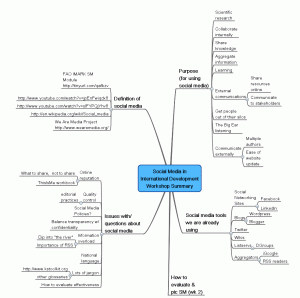
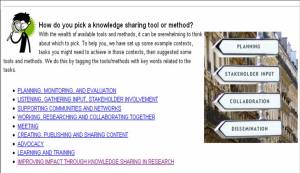
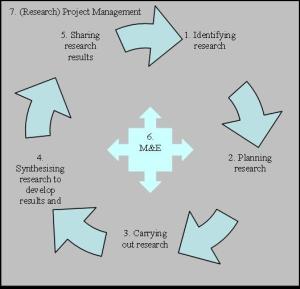
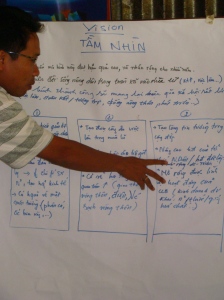
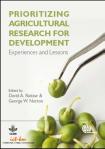

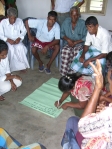
 stakeholders what messages would work to promote adoption of better practices in wastewater irrigation
stakeholders what messages would work to promote adoption of better practices in wastewater irrigation understand how to write and package research results from projects working on rice in the Northern uplands of Laos, and created factsheets which were uploaded into the Laos Rice Knowledge Bank (online tool)
understand how to write and package research results from projects working on rice in the Northern uplands of Laos, and created factsheets which were uploaded into the Laos Rice Knowledge Bank (online tool) to increase the knowledge sharing and learning together with stakeholders as part of
to increase the knowledge sharing and learning together with stakeholders as part of 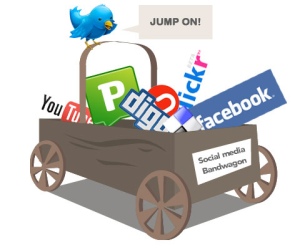
 some
some 








![MPj04330050000[2] MPj04330050000[2]](https://ictkm.files.wordpress.com/2009/06/mpj0433005000021.jpg?w=300&h=199)
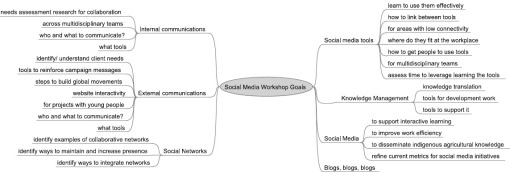
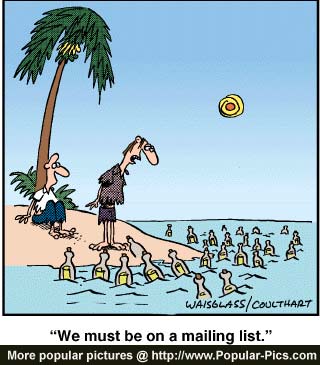 highlight issues and activities, celebrate success stories, point to useful resources and give you a hint of upcoming events. A great way to build a relationship with your target audience, an email (e-) newsletter is cost-effective and a valuable tool for communicating via the Internet.
highlight issues and activities, celebrate success stories, point to useful resources and give you a hint of upcoming events. A great way to build a relationship with your target audience, an email (e-) newsletter is cost-effective and a valuable tool for communicating via the Internet.
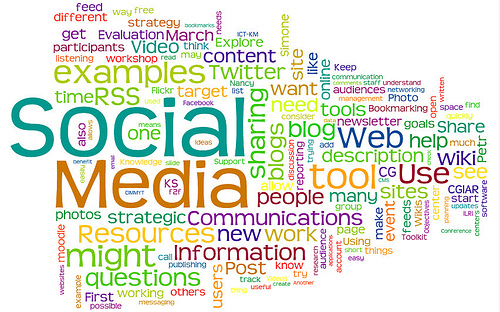
 Wikis: the word originates from Hawaii – ‘wiki wiki’ means quick. Wikis let you create your collaboration environment online very ‘quickly’. What this means is that you can actually create your own wiki site, place your content on it and allow access to any number of people to see, add to or edit it in almost ‘real-time’. A history of revisions is maintained online, so you can check back on earlier versions.
Wikis: the word originates from Hawaii – ‘wiki wiki’ means quick. Wikis let you create your collaboration environment online very ‘quickly’. What this means is that you can actually create your own wiki site, place your content on it and allow access to any number of people to see, add to or edit it in almost ‘real-time’. A history of revisions is maintained online, so you can check back on earlier versions. Google Sites: originally based on wiki technology, Google Sites has shortcuts and improvements that include website management features.
Google Sites: originally based on wiki technology, Google Sites has shortcuts and improvements that include website management features. Google Docs: well, you’re probably wondering what took me so long to get to this, and chances are that you may already have tried this tool out.
Google Docs: well, you’re probably wondering what took me so long to get to this, and chances are that you may already have tried this tool out.
